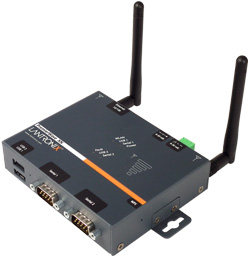The Office 2007 Environment
The updates in the Office 2007 environment make finding commands and tools easier for you. The new interface aims to make all of the Office programs more user-friendly and efficient. The following features will be explained in this document:
The Ribbon
Gone in Office 2007 are the familiar pull-down menus and toolbars seen in previous versions of Office. These have largely been replaced by the Ribbon, a more intuitive and visual tab-based interface. Programs open in the Home command tab, which displays most of the tools you will need to create a basic document. Specialized features can then be quickly accessed from the other command tabs.Tools for each command tab are divided into groups (e.g., the Clipboard, Font, and Paragraph groups in Word's Home tab). Some command tabs are context-sensitive, displaying only when a particular feature is being used. For example, when a table has been inserted into a Word document, the Design and Layout tabs appear in the Ribbon.
The Office Button
The Office 2007 OFFICE BUTTON is located in the upper-left of the program window and is identified by the Office logo.The OFFICE BUTTON allows you to open, save, and print documents, and perform other document output functions (e.g., fax and email). The OFFICE BUTTON is also where you go to change Word's options and preferences, by clicking the new Options button (e.g., Word Options, Excel Options, PowerPoint Options). From the Options button you can customize an Office program's display and settings.
Accessing Dialog Boxes and Task Panes
When using a tool from the Ribbon, you will often want to see additional options and settings. Office provides dialog boxes and task panes for each group within a command tab. Dialog boxes and task panes are accessed by clicking the buttonThe resulting dialog box provides advanced features and settings for a given group:
Command Tabs
Upon starting an Office 2007 program, the command tabs (such as Write, Insert, and Page Layout) are found along the top of the Ribbon. The command tabs are customized for each program and allow you to find the functions and controls that you will use. For certain functions, such as editing a table, the relevant command tab does not appear unless you are working with a table.When you select the appropriate command tab at the top of the Ribbon, formatting options appear in groups relevant to that command tab. For example, on the Home tab, you will find such groups as Font, Paragraph, and Style.
Smart Tags
Like the commands on the Ribbon, Smart Tags put commonly used functions within easy reach. A Smart Tag is an icon containing a menu that temporarily appears within your document after you perform a certain action. The purpose of Smart Tags is to inform you of the options available in different situations when using Office 2007. For example, after you paste text, a Smart Tag appears with formatting options for that text; however, the tag will disappear when you begin typing more text. Smart Tags also appear when using the AutoCorrect feature and when errors occur in Excel formulas.
EXAMPLE:
- After pasting, to reveal your options, click the PASTE OPTIONS smart tag
Smart Tags and AutoCorrect
When Word AutoCorrects your text, a Smart Tag allows you to change or turn off the AutoCorrect feature. For more information on AutoCorrect, see AutoCorrect: Corrections & Replacements.The Help Task Pane
The Office 2007 Help system includes Back and Forward buttons to navigate through help menus and a text-based Microsoft Office Help dialog box. The Help system includes a table of contents, various search options, and updates on changes made from previous Office environments. For information on using Office 2007 Help, refer to Using Microsoft Office Help.To view Microsoft Office Help:
- In the upper right corner of the Ribbon, click HELP
Using ScreenTips
ScreenTips show information about the buttons available on the Ribbon and can be helpful if you are unsure about the function of a specific command or button. ScreenTips give you a brief description of the function of any button on the Ribbon by hovering your mouse over the button. You can also configure Office 2007 to show you keyboard shortcuts within ScreenTips.Activating ScreenTips
NOTE: The following instructions for activating tooltips apply to Word, PowerPoint, and Excel. For Publisher and Outlook, refer to Viewing Screen Tips.- Click the OFFICE BUTTON
, » click OPTIONS
EXAMPLE: In Word, click WORD OPTIONS
The Word Options dialog box appears.
NOTE: Depending on which program you are working in, the Options button will appear as PowerPoint Options, Excel Options, or Word Options. - From the Categories pane, select Popular
- In the task pane, under Top options for working with Word, from the ScreenTip style pull-down list, select Show feature descriptions in ScreenTips
- Click OK
The tooltips function for buttons on the command tab is now activated.
Showing Shortcut keys
Options for showing or hiding shortcut keys within ScreenTips can be selected only when the Show feature descriptions in ScreenTips option is selected. To learn how to do this, refer to Activating ScreenTips.NOTES:
Shortcut keys will remain visible even if the ScreenTips option is deactivated, but no additional information will be shown.
- Click the OFFICE BUTTON
, click WORD OPTIONS
The Word Options dialog box appears.
NOTE: Depending on which program you are working in, the Options button will appear as PowerPoint Options or Word Options. - In the Categories pane, select Advanced
- In the task pane, from the Display section, select Show shortcut keys in ScreenTips
- Click OKThe shortcut keys for buttons on the Ribbon are now visible within ScreenTips.
Viewing ScreenTips
- Hold the mouse over any button
A ScreenTip appears for the selected button.
Make sure to let me know in the comments below or on ourFacebook page how you've got with it or Do you have any questions

No comments:
Post a Comment